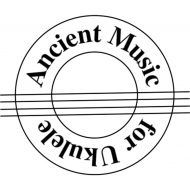Notes on the Pieces
All sources are Wikipedia.
Dances
The Estampie is the first known genre of medieval era dance music, a popular instrumental and vocal form in the 13th and 14th centuries with a succession of repeated sections. The melody in a lively triple meter is monophonic (in soprano/alto range such as a recorder). However, the melody becomes polyphonic when accompanied by instrumentalists (in tenor range such as the crumhorn). They were played as entertainment for the wealthy during their feasts.
The Ductia as like the estampie but more regular. “The ductia is a melody that is light and brisk in its ascents and descents, and which is sung in carole by young men and girls, …. It influences the hearts of young girls and men and draws them from vanity, and is said to have power against that passion which is called love or ‘eros’.” (Johannes de Grocheio).
Troubadour Songs, Rondeaux, Ballades, Virelais and Chansons
People who sang the secular songs of the middle ages were jongleurs or minstrels, first appearing around the 10th century. These actors, acrobats, fiddlers and singers moved from castle to castle.
A Troubadour is a composer and performer of Old Occitan lyric poetry during the High Middle Ages (1100–1350). The troubadour school or tradition spread to Italy and Spain. The texts of troubadour songs deal mainly with themes of chivalry and courtly love. Most were metaphysical, intellectual, and formulaic. Many were humorous or vulgar satires.
There were three Formes Fixes of verse set to music between the late 13th and the 15th centuries, namely the Rondeau, Ballade and Virelai. Each was also a musical form, generally a chanson, and all consisted of a complex pattern of repetition of verses and a refrain with musical content in two main sections. The rondeau is believed to have originated in dance songs.
A Chanson is in general any lyric-driven French song, usually polyphonic and secular. A singer specializing in chansons is known as a “chanteur” or “chanteuse”, and collection of chansons is a “chansonnier”. The earliest chansons geste were the epic poems performed to simple monophonic melodies. These usually recounted the famous deeds (geste) of past heroes, legendary and semi-historical. The chanson courtoise or grand chant was an early form of monophonic chanson, the chief lyric poetic genre of the trouvères. It was a song of courtly love, written usually by a man to his noble lover. A Burgundian chanson is a polyphonic French song of the late Middle Ages and Renaissance. The earliest chansons were for two, three or four voices, with first three becoming the norm. Sometimes, the singers were accompanied by instruments.
Cantiga, Villancico and Carol
A Cantiga is a medieval monophonic song. Over 400 extant cantigas come from the Cantigas de Santa Maria, narrative songs about miracles or hymns in praise of the Holy Virgin.
Derived from medieval dance forms, the 15th century Villancico was a type of popular song sung in the vernacular and frequently associated with rustic themes. With the decline in popularity of the villancicos in the 20th century, the term became reduced to mean merely “Christmas carol”.
Coventry Carol was simply “Song 2” from the Pageant of the Shearmen and Tailors. It was named after the city of Coventry where theatrical performances about the theological mysteries of God’s creation were performed as early as 1392 until suppressed in 1579.
Notes on the Composers
Composers listed in the order they appear in this book. All sources are Wikipedia.
Anonymous or Unknown – the majority of music in this time period is traditional and/or the composer or writer of the music is unknown, or their names lost.
Traditional – Canção do figueiral (Song of the fig-tree orchard) is celebrated as the oldest traditional song in Portuguese (about 12th century). The words were initially attributed to an 8th century character, Guesto Ansur, but it was eventually exposed as an apocryphal text.
Gautier de Coincy (ca 1177 – 1236) was a French abbot, poet and musical arranger, chiefly known for his devotion to the Virgin Mary. He set poems to popular melodies and songs of his day.
Colin Muset (born 1210) was a trouvère and a native of Lorraine. He made his living in the Champagne by travelling from castle to castle singing songs of his own composition and playing the vielle.
Blondel de Nesle – either Jean I of Nesle (ca 1155 – 1202) or his son Jean II of Nesle (died 1241) – was a French trouvère, who was nicknamed ‘Blondel’ for his long blond hair. If the works are correctly identified and dated, he was a significant influence on his contemporaries, who made use of his melodies.
Guillaume de Machaut (ca. 1300 – 1377) was a French poet and composer of the later Medieval era who was the central figure of the ars nova style. Machaut is regarded as the most important composer and poet of the 14th century and is the first significant composer whose name is known. Machaut’s poetry was greatly admired and imitated by other poets, including Geoffrey Chaucer.
Gilles de Binche (ca 1400 – 1460), or more commonly known as Gilles Binchois, was a composer from the Low Countries, one of the earliest members of the Burgundian school and one of the three most famous composers of the early 15th century.
